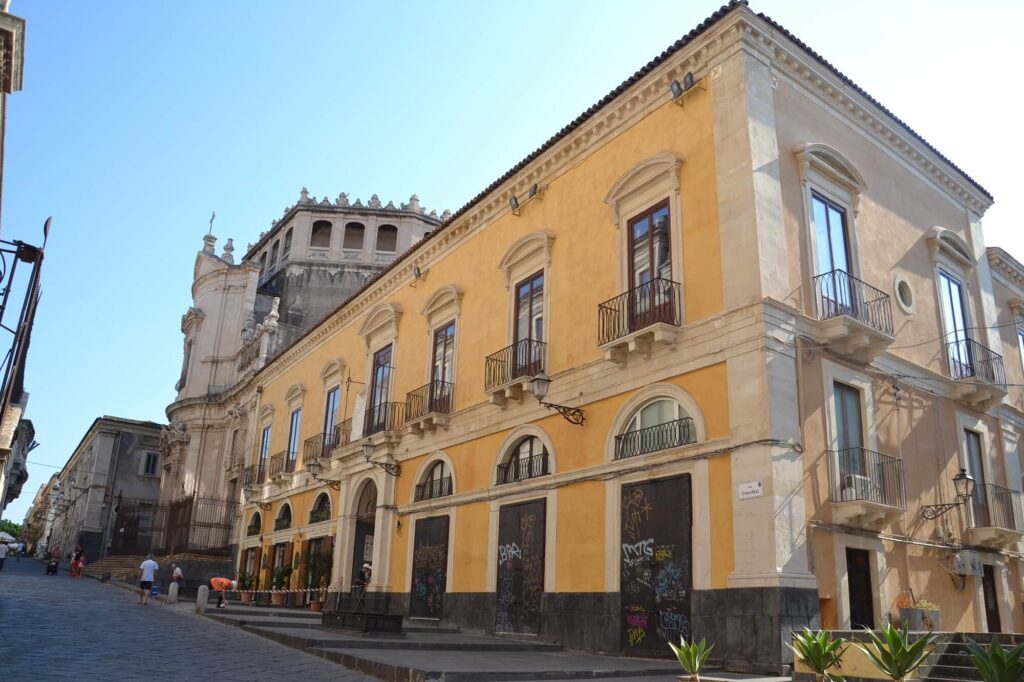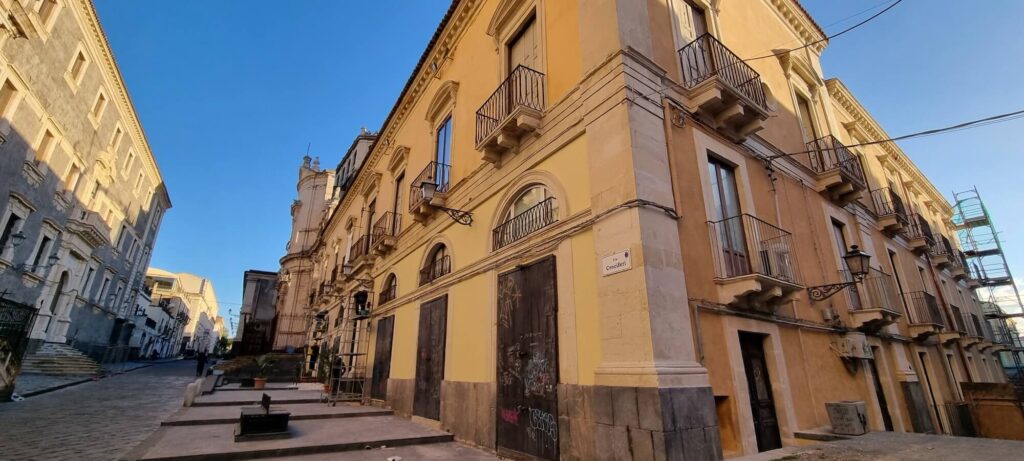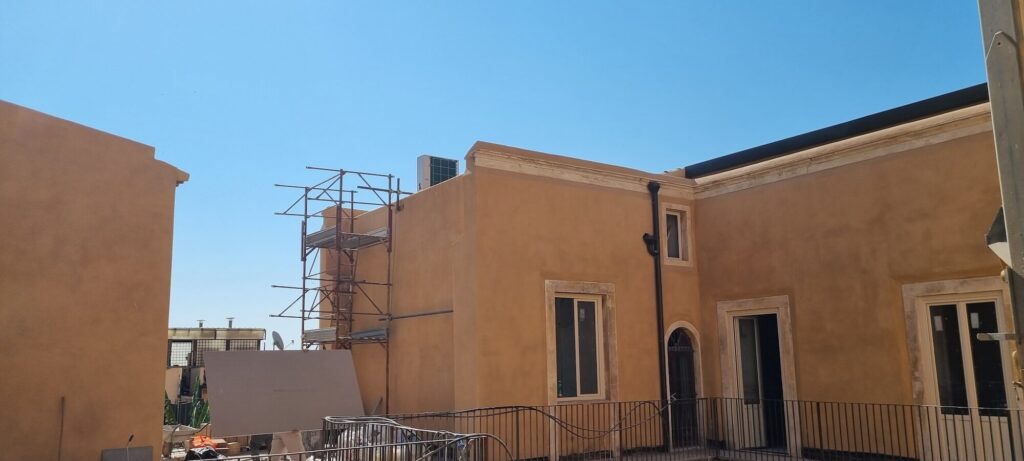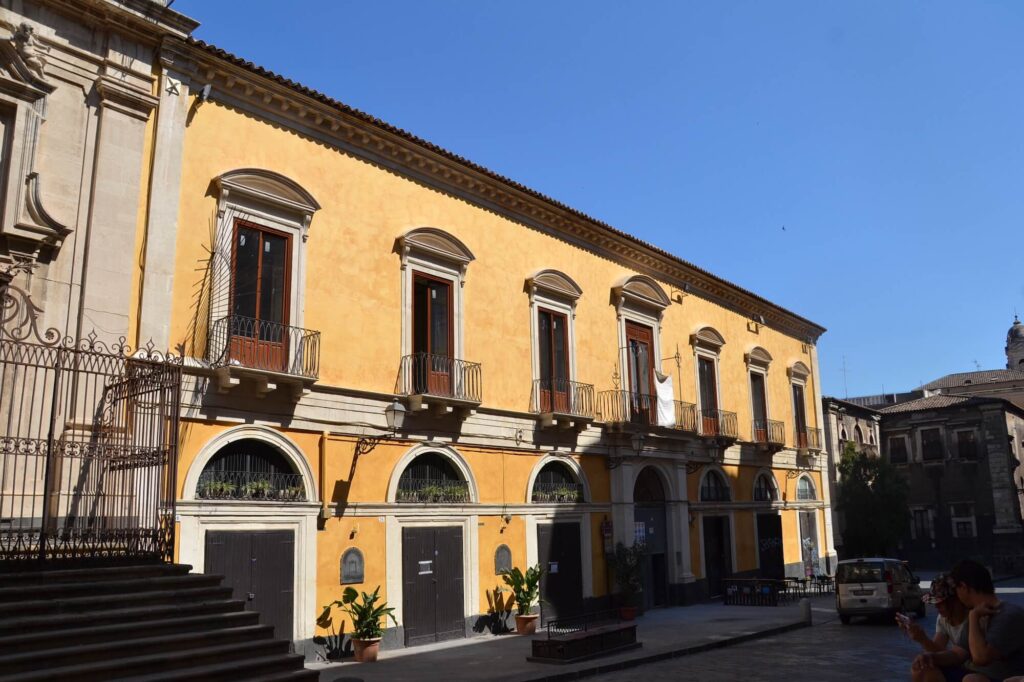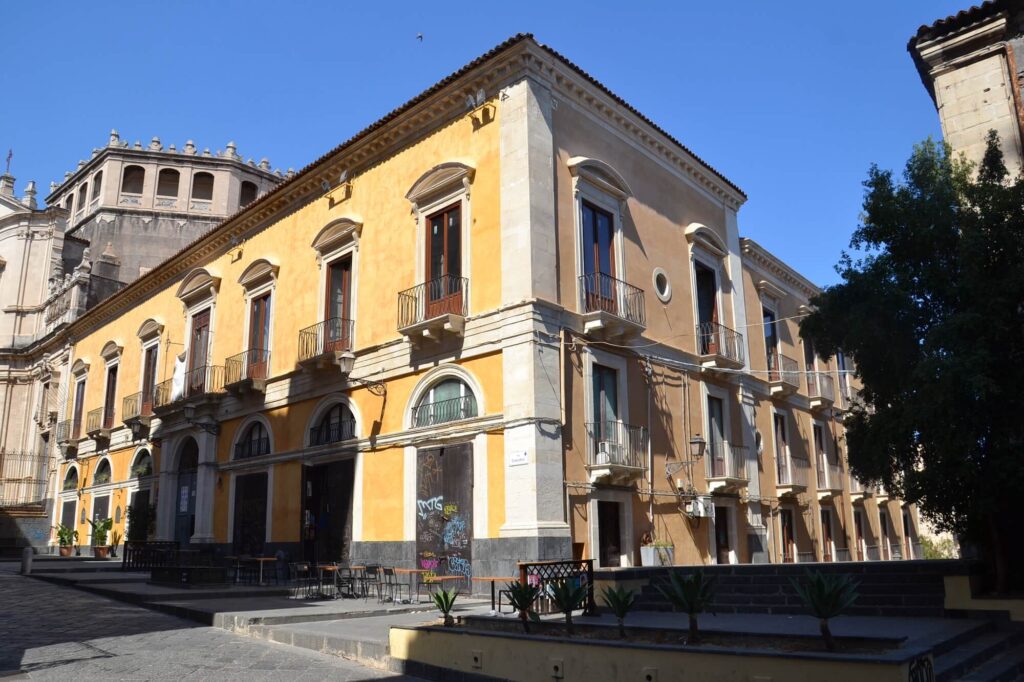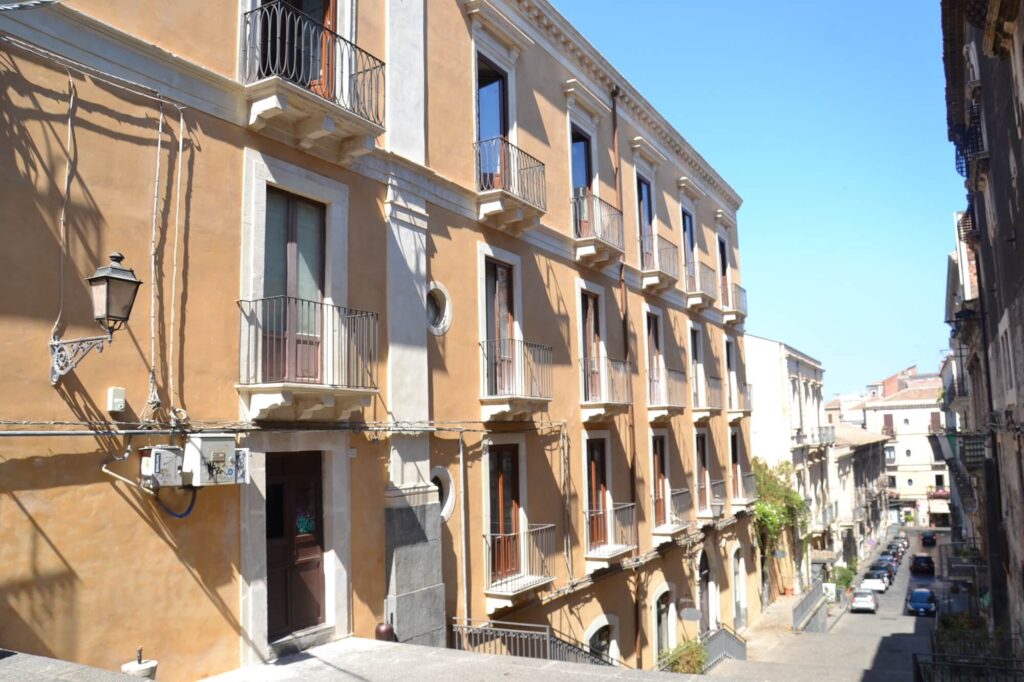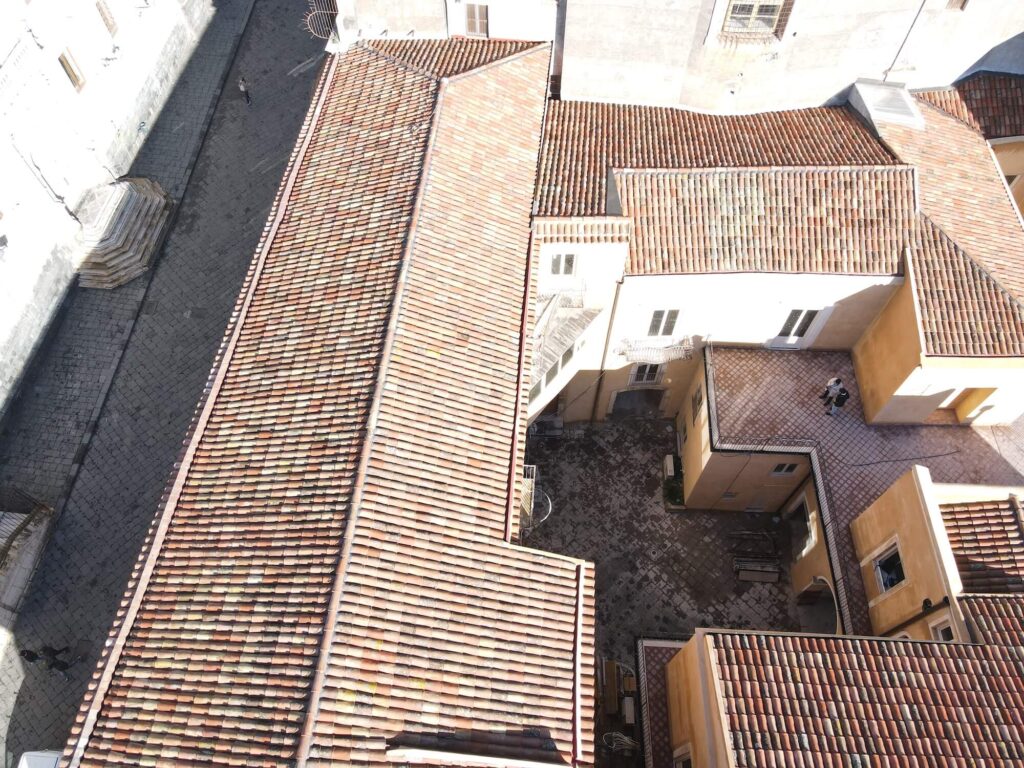The work involved the restoration of an eighteenth-eighteenth century building in Via Crociferi (at the corner with Via Alessi) in the historic centre of Catania. The prolonged lack of maintenance work had led to a situation of general decay, which had spread to the entire structure and required action on several fronts. For this reason, we maximised our action by integrating various interventions within the 110% Superbonus and other state bonuses, from energy requalification to the consolidation of the building’s structure, responding with tailor-made solutions even to the numerous obstacles that presented themselves once the intervention had begun, which could not have been detected through the preliminary surveys.
Our Intervention
In response to the severe damage caused mainly by infiltration, as a first step we proceeded to the total reconstruction of the building’s roof covering and also of the line structure supporting it, which was by then irrecoverable, with the creation of kerbs at the top, based on the structural project by Engineer Sebastiano Caramagno. This work on the roof was also matched by a general and anti-seismic consolidation work, starting first of all with the walls, which were plated with fibreglass netting and structural plaster where particularly damaged. Based on the structural design, we also provided for the demolition of some steel and brick decks and floors, now seriously unsafe due to weather corrosion, and their reconstruction using a structural mortar with a very low specific weight. Lastly, the insertion of steel tie rods was planned to reinforce the wall faces, originally built using the sack masonry technique.
Technical Pills
The structural work was developed in synergy with the energy efficiency measures, these on a project by Studio Stancanelli Russo Associati s.r.l., with the collaboration of engineer Melita Pennisi. Thus, while taking care of the roof, we also provided for its insulation, and we also changed most of the existing window and door frames, replacing them with oak and douglas wooden frames, in colours in keeping with the historical context. In addition to these modernisation measures, designed to make the building more sustainable, we also added the use of thermo-plaster applied to the non-main façades (those not affected by the historical constraint) and the adaptation of the thermal systems, with the installation of heat pumps. Thanks to these interventions, the building’s energy efficiency has been increased by two classes. Furthermore, what characterised this project was the respect for the historical memory of traditional building and restoration, between innovation and tradition. Under the supervision of the Soprintendenza per i Beni Culturali, which suggested the techniques to be used, we restored both the stone and the plaster of the facades on Via Crociferi and Via Alessi. For the new plaster, given its important historical value, we have maintained the difference in colour between the main and secondary streets. In fact, it was common practice at the time to use a more refined plaster, similar to stucco and highly worked, on the façade of the main street and instead cocciopesto, an unrefined plaster, on the secondary streets. We have maintained this characteristic, using a plaster with a final glaze on Via Crociferi and cocciopesto for the other areas. Thanks to our restoration work, the building once again has two traditionally different colours, with two different but similar glazes to keep the logic of the period intact.
Object of intervention
Seismic improvement and energy efficiency work on the building known as ‘Palazzo Zappalà Tornabene’ under the Superbonus 110% and restoration of the facades under the Bonus facade 90%.
Performances – Stancanelli Russo Associati
Technical and economic feasibility project
Definitive architectural and systems design
Executive design
Construction design
Services rendered – Impresa Ernesto Stancanelli srl
Building Site
Construction
As Built
Client
Condominium ”Palazzo Zappalà Tornabene” – Via Crociferi n.30 corner Via Alessi n.32
Construction management, structural design, CSP and CSE
Ing. Sebastiano Caramagno
Year
2021-2023
Design technology
Building Information Modeling (BIM)

